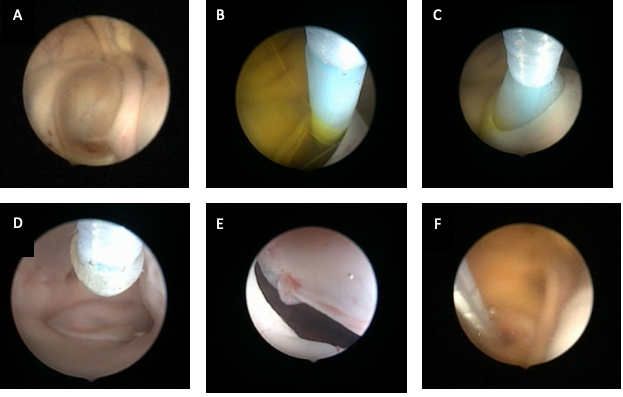Endoscopic Fenestration of Posterior Fossa Arachnoid Cysts
Four Surgical Cases and Literature Review
DOI:
https://doi.org/10.46900/apn.v4i3(September-December).161Keywords:
Posterior fossa, Arachnoid cysts, Hydrocephalus, Neuroendoscopy, Children, VP shuntAbstract
Introduction: Posterior Fossa arachnoid cysts (PFAC) are rare lesions in the childhood. Owing to the wide variety of cystic malformations within the posterior cranial fossa, PFAC have long attracted the attention of pediatric neurosurgeons because they can produce not only neurological symptons but also behaviro and learning deficts, in addition to presenting major surgical challenges. Surgical treatment is warranted in symptomatic patients. Nowadays, neuroendoscopic techniques have established themselves as the treatment of choice of these lesions.
Patients and Methods: We present four cases of symptomatic PFAC which were treated using endoscopic neurosurgery. Endoscopic approaches were defined by the presence of hydrocephalus, and discussed in each case.
Results : Two cases of quadrigeminal plate cysts, predominantly occupying the infratentorial compartment , one case of supracerebellar cyst and one case of cerebellopontine angle were treated with good results. However, one case of quadrigeminal plate cyst developed a communicating hydrocephalus, requiring placement of cyst-ventricle peritoneal shunt, guided by the neuroendoscope.
Discussion and Conclusion : A literature review was performed. The clinical features, the advantages and disadvantages of several surgical treatments are discussed. Symptomatic PFAC should be treated. The relatively good results using endoscopic fenestration buttresses our use as a first-line surgery.
Downloads

Additional Files
Published
How to Cite
Issue
Section
License
Copyright (c) 2022 Patricia Dastoli, Marcos Devanir S. Costa, Jardel M. Nicácio, Sergio Cavalheiro

This work is licensed under a Creative Commons Attribution 4.0 International License.

When publishing in Archives of Pediatric Neurosurgery journal, authors retain the copyright of their article and agree to license their work using a Creative Commons Attribution 4.0 International Public License (CC BY 4.0), thereby accepting the terms and conditions of this license (https://creativecommons.org/licenses/by/4.0/legalcode).
The CC BY 4.0 license terms applies to both readers and the publisher and allows them to: share (copy and redistribute in any medium or format) and adapt (remix, transform, and build upon) the article for any purpose, even commercially, provided that appropriate credit is given to the authors and the journal in which the article was published.
Authors grant Archives of Pediatric Neurosurgery the right to first publish the article and identify itself as the original publisher. Under the terms of the CC BY 4.0 license, authors allow the journal to distribute the article in third party databases, as long as its original authors and citation details are identified.





























